| Type of Object | Head crest, figure Chiwara (also Chi wara, Ci Wara, or Tyi Wara; Bambara: ciwara; French: tchiwara) |
|---|---|
| Country of Origin | Mali |
| Ethnicity | Bamana/Bambara |
| Material | Pigment, Wood |
| Approximate Age | Unknown |
| Height (Inches) | 38” |
| Width (Inches) | 10” |
| Depth (Inches) | 10 |
| Weight (Pounds) | 5lbs |
Tribe Information
About the Bamana People
“The 2,500,000 Bambara people, also called Bamana, form the largest ethnic group within Mali and occupy the central part of the country, in an area of the savannah. They live principally from agriculture, with some subsidiary cattle rearing in the northern part of their territory. The Bambara people are predominantly animists, although recently the Muslim faith has been spreading among them. The Bambara kingdom was founded in the 17th century and reached its pinnacle between 1760 and 1787 during the reign of N’golo Diarra is credited with conquering the Peul people and in and in turned claimed the cities of Djenne and Timbuktu. However, during the 19th century, the kingdom began to decline and ultimately fell to the French when they arrived in 1892. For the most part, Bambara society is structured around six male societies, known as the Dyow (sing Dyo).”
Source:
Baquart, Jean-Baptiste. The Tribal Arts of Africa. New York: Thames and Hudson Inc. 1998. Print.
You must be logged in to post a review.
Additional Information
About the Bamako Chiwara
Bamako Chiwaras come from the northern region and stylistically will be horizontal. A female version will have straight horns and be accompanied by a baby, while the male version will have bent horns and a phallus(penis). The Chiwara will typically be made up of two parts, the body and the head, connected by two iron clamps.
Chiwara Headdresses
A Chiwara is a headdress based on a mystical creature that resembles an antelope. Bamana legend tells a story about a Chiwara who taught their ancestors to cultivate. They watched the Chiwara use his antlers to dig and hooves to plant seeds. By observing closely, humans became expert farmers, but began to waste food as they had too much to consume themselves. The Chiwara then buried himself in the earth after becoming disappointed with the humans. The elders, sad that they had lost him, made a mask in his memory. The Chiwara mask is only given to the best and hardest workers of the land, often being passed down from one expert to another. Considered a great honor, the recipient of the mask will wear the headdress while dancing the ceremonial Chiwara dance. The dance symbolizes fertility of earth and man, and gratitude towards the Chiwara and ancestors.

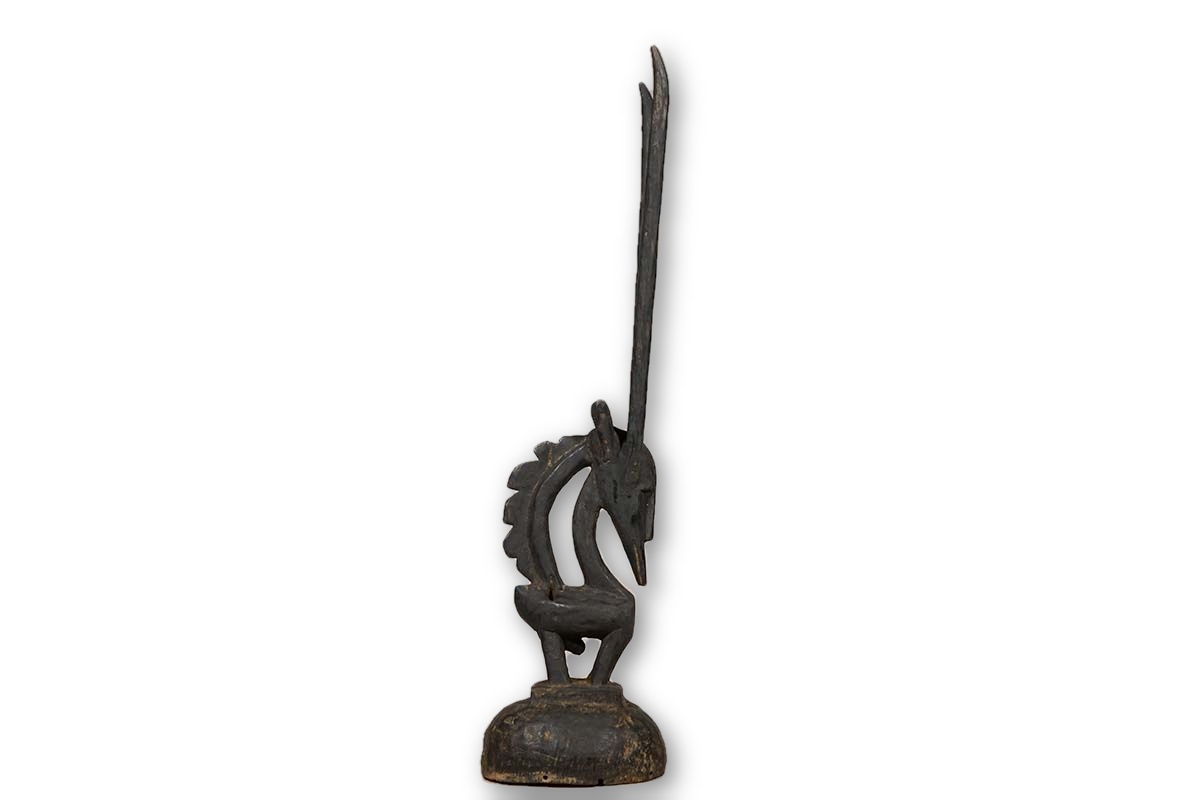

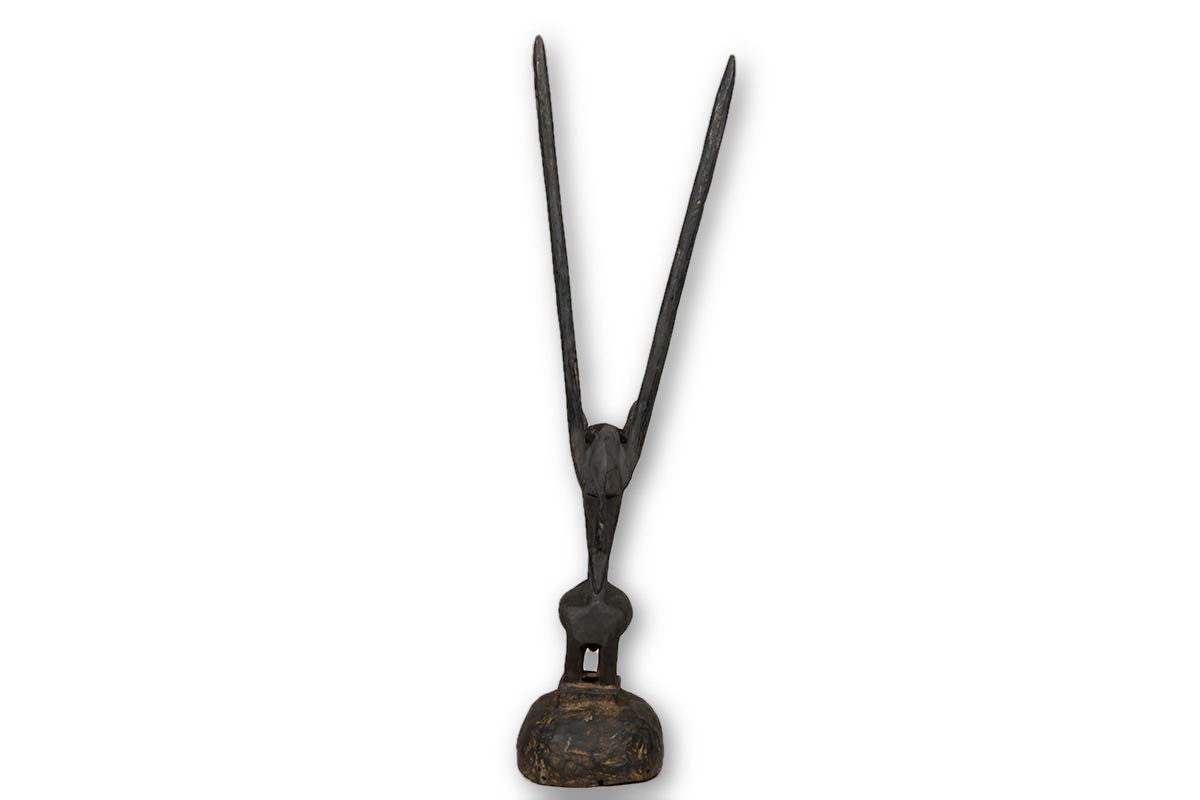
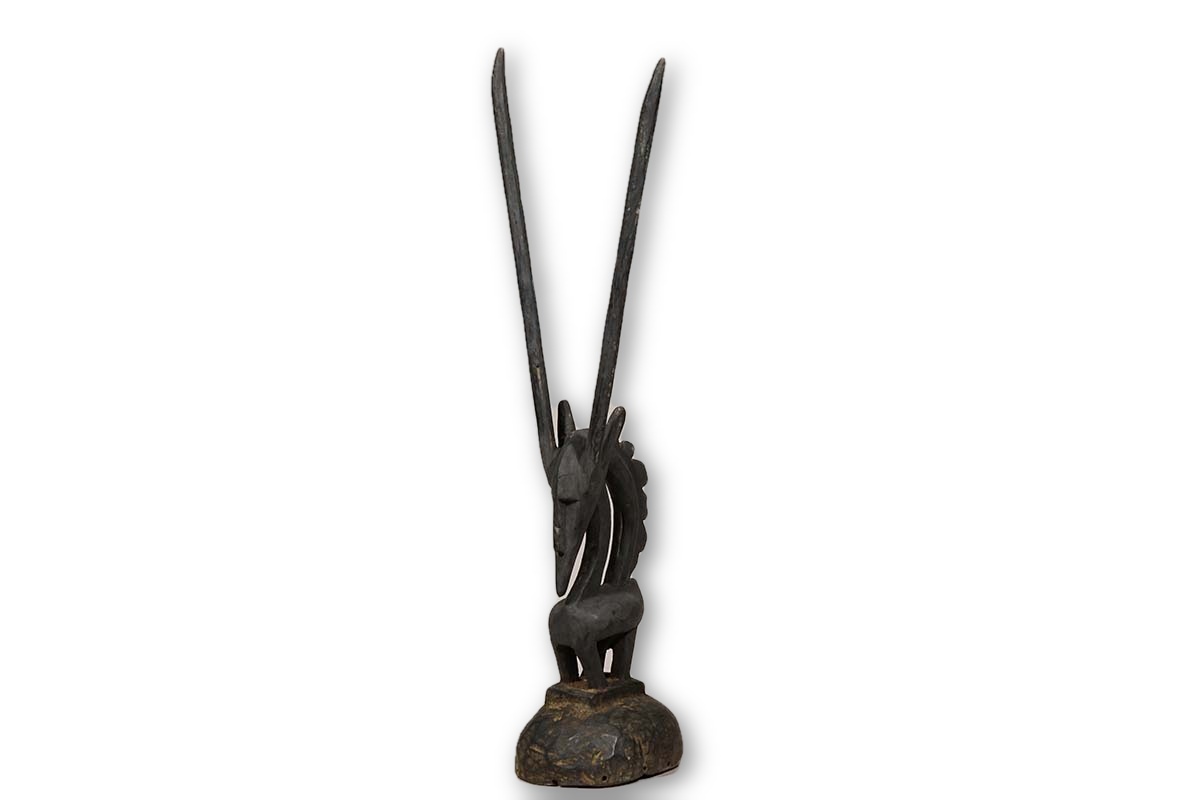
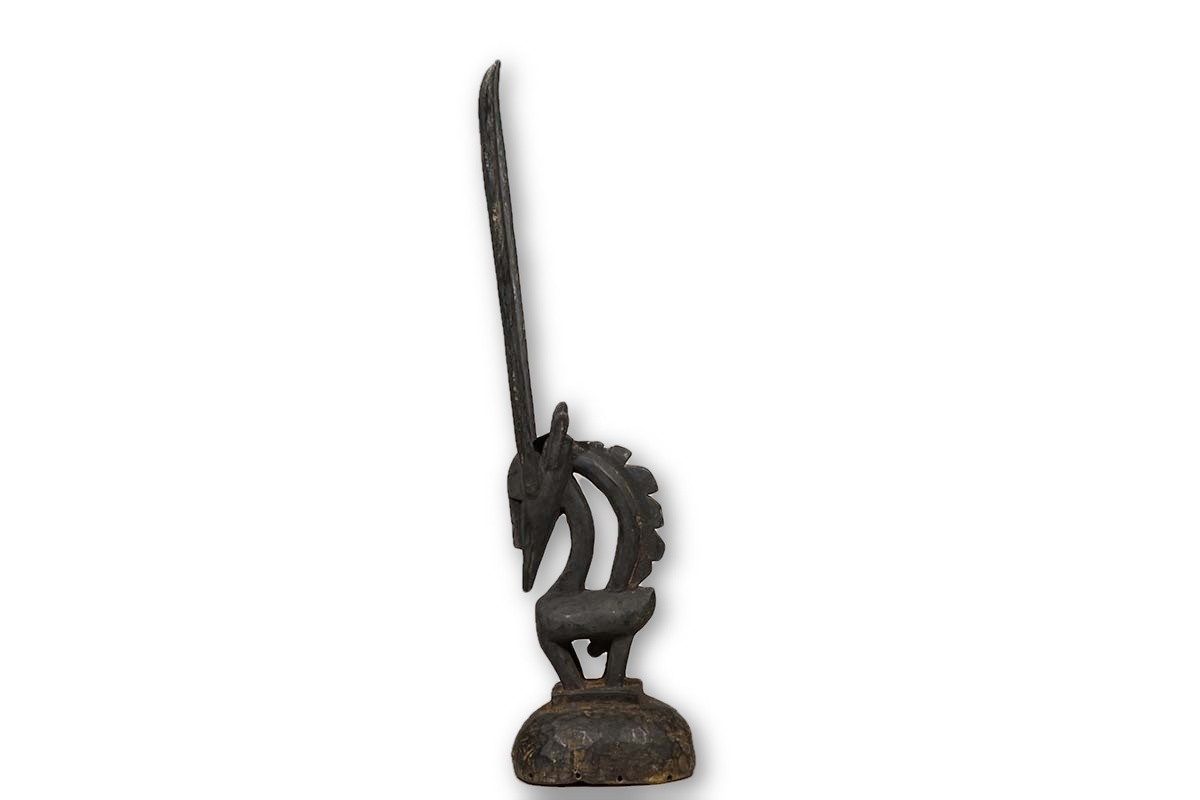
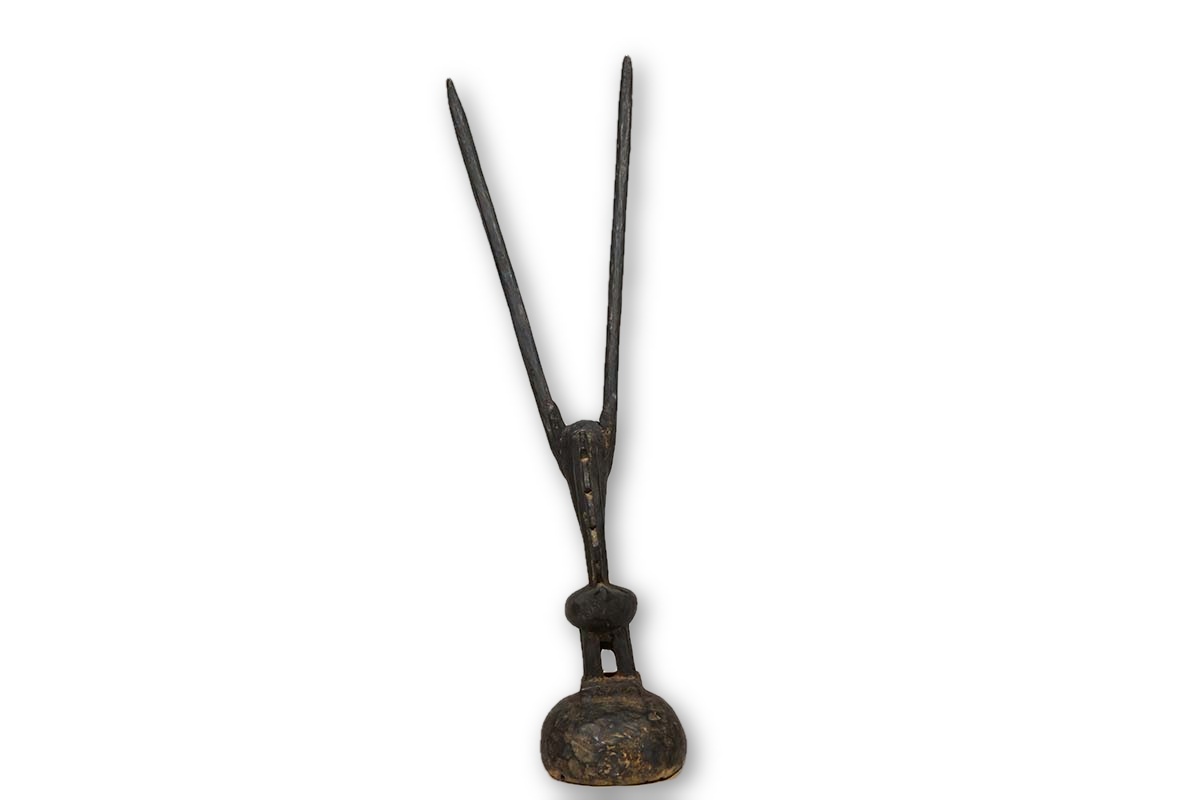

Reviews
There are no reviews yet.